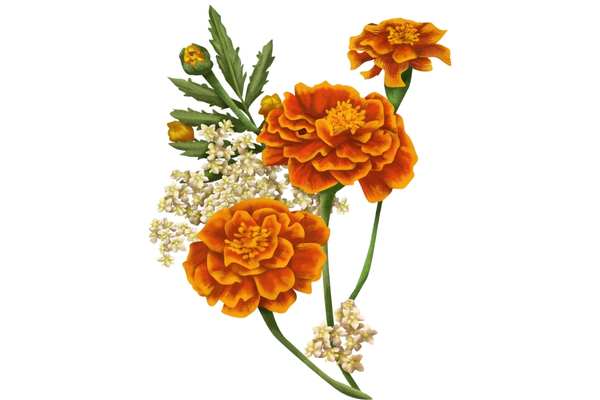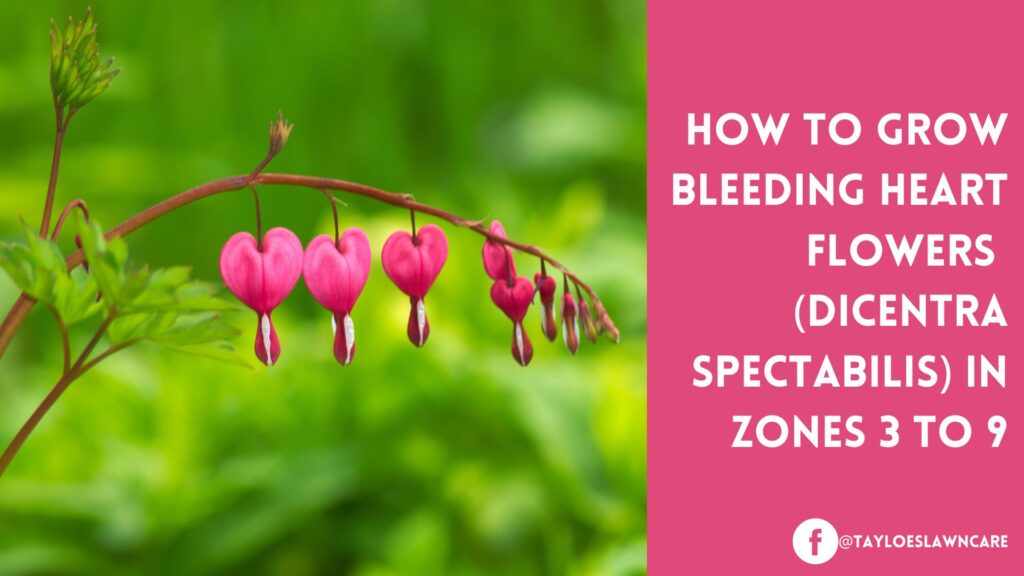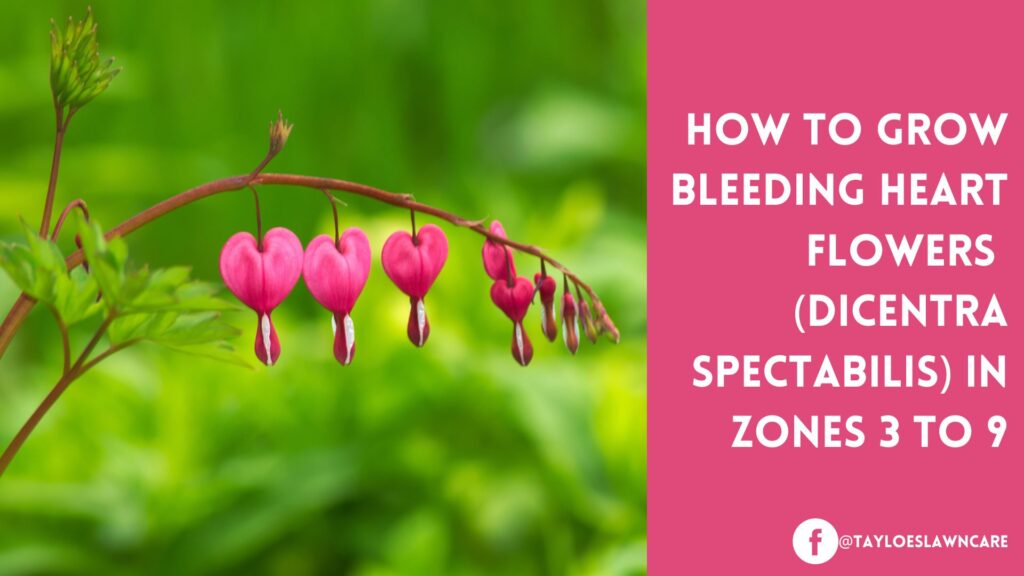Last Updated on: 10th September 2024, 08:23 am

It’s also one of your vegetable garden’s most useful companion plants.
Marigold (Tagetes erecta) is a beautiful and fragrant flower native to Mexico and Central America. It is part of the Asteraceae family, closely related to daisies and sunflowers. Marigolds are popular annual flowers in fabulous colors, including yellow, orange, cream, and red.
Marigold flowers will grow well in most USDA plant hardiness zones in the United States. In northeastern North Carolina zones 7 or 8, you can start seeds in a greenhouse in late February and transplant them after the soil warms to 70° and the chance of frost passes. Or, you can plant sow seeds in the ground (follow the step-by-step instructions).
Marigolds prefer a soil pH of 6 to 7, so plant them away from pine trees on your property. If acidity drops below 5.5, they will likely turn brown and wither.
The Lovely Flower Petals and Spicy Fragrance of the Marigold Flower
Marigold leaves are long and narrow, with a toothed edge. They are usually deep green and have a strong, spicy aroma. The stems are usually short and thin, and marigolds can grow up to two feet tall.
The flower heads of these plants are usually bright yellow or orange, although some can be cream or red. They have a distinct five-petal shape and slightly ruffled edges.
Marigolds have a sweet, spicy fragrance often used in perfumes and potpourris. The scent is calming and uplifting and can help reduce stress and anxiety. Their blossoms are also known to attract beneficial insects, such as ladybugs and bees, to the garden.
Meet the Marigold Species
Marigolds are beloved for their vibrant colors, ease of cultivation, and ability to deter pests. While several plants carry the common name “marigold,” they belong to several species of tagetes spp. and even different genera. Here’s a closer look at the various types of marigolds and their unique characteristics.
French Marigolds (Tagetes patula)
French marigolds are known for their compact size and profuse blooming. Originating from Mexico and Guatemala, these plants have been cultivated extensively in France. French marigolds produce a range of colors from deep reds and oranges to bright yellows.
Due to their petite stature, French marigolds are ideal for borders, containers, and edging. The French marigold thrives in full sun and well-drained soil, blooming from early summer until frost.
African Marigolds (Tagetes erecta)
Despite their name, African marigolds hail from the Americas, specifically Mexico. They are the tallest among the marigold species, often reaching heights of up to three feet. The tall plants have pom-pom shaped large flowers that come in shades of yellow and orange. African marigolds sometimes produce large double flowers.
The African marigold is perfect for creating dramatic backdrops in flower beds and are also popular in cut flower arrangements. Like their French counterparts, African marigolds prefer full sun and bloom throughout the summer.
When most people are looking for marigolds grown alongside other species as companion plants, they’re likely referring to African varieties.
Signet Marigolds (Tagetes tenuifolia)
Signet marigolds stand out with their delicate, lace-like foliage and small, single blooms. These flowers, usually in shades of yellow and orange, emit a citrusy fragrance. Beyond their ornamental value, signet marigolds are edible, adding a zesty flavor to salads and dishes.
Signet marigolds grow well in poor soils and are more drought-tolerant than other marigold species. The mounded growth habit of the signet marigold makes them suitable for rock gardens and containers.
Mexican Marigolds (Tagetes lucida)
Native to Mexico and Central America, Mexican marigolds, also known as Mexican tarragon, have a rich history in culinary and medicinal uses. Their anise-flavored leaves serve as a substitute for tarragon in cooking. Mexican marigold plants produce clusters of small, golden-yellow flowers and lush foliage growing up to three feet tall.
They prefer warm climates and well-drained soils. In addition to their culinary applications, Tagetes lucida has been traditionally used in rituals and as herbal remedies.
Pot Marigold (Calendula officinalis)
Pot marigold, commonly known as calendula, differs from the Tagetes genus. Calendula officinalis, belonging to the Calendula genus, is native to southern Europe and parts of Asia. Its bright yellow to deep orange blooms have made it a favorite in gardens worldwide.
The edible flower has medicinal properties and is often used in creams and ointments for its skin-healing benefits. It prefers cooler climates and can bloom throughout the year in temperate regions.
Is Calendula Officinalis a True Marigold?
Despite sharing the common name “pot marigold,” calendula officinalis is not a true marigold. The confusion arises from its similar appearance and overlapping common names. While both Tagetes species and calendula belong to the larger Asteraceae family, they are distinct in their botanical classifications and characteristics.
Tagetes spp. Make Wonderful Companion Plants
Besides being a lovely annual, Tagetes erecta can famously repel pests, making them a great companion for many other plants.
In addition to pest-repelling benefits, these flowers can help other plants by providing a nutrient-rich environment. Marigolds produce a lot of nitrogen, which can improve the garden soil.
They also help attract beneficial insects, such as ladybugs and lacewings, which can help control garden pests.
African marigolds and French marigolds are relatively tall plants with a strong upright habit, bushier growth, and large double flowers. Marigolds growing to those heights shade the soil, which can help discourage weeds.
Finally, these beauties are also known to attract pollinators such as bees, butterflies, night moths, and hummingbirds. Pollination will benefit other plants in the garden, as these pollinator insects will help ensure that the other plants are pollinated and can produce fruits and vegetables.
But what are the best companion plants for marigolds?
Marigolds repel pests such as aphids, whiteflies, and nematodes. Because of its pest-repellent ability, some of the best companion plants for marigolds include these classic garden favorites, to name just a few:
Tomatoes
Sweet peppers
Eggplants
Squash
Melons
Pumpkins
Jalapenos
Lettuce
Onions
Cucumbers
Sweet basil
Rosemary
Roses
How to Grow Marigold Seeds and Care for Your Flowers All Season Long
Marigolds are easy to grow and require minimal maintenance. You can have a bright and cheerful garden in no time with a few simple steps.
Note: These instructions assume you will plant directly in the ground from seeds. Many purchase marigolds and transplant them in late April or early May in zones 7 and 8. However, you can save a lot of money by direct sowing in well-draining soil after the danger of frost passes. They love warm weather and will tolerate the hot summers in North Carolina.
Step 1: Choose a sunny spot in your garden for your flowers – again, this should be after the last frost date. Marigolds need to be in garden beds that get at least six hours of direct sunlight each day to thrive, and the soil temperatures must be around 70°.
Step 2: Prepare the garden soil for planting. Marigolds prefer well-drained soil with a pH between 6.0 and 7.0. Dig up the soil and mix in some compost or potting soil to improve the soil’s fertility.
Step 3: Plant the flower seeds. Direct sow the seeds about 1/4 inch deep and cover lightly with soil. While you can start seeds indoors, marigolds prefer you sow seeds directly outdoors. Space the seeds about 6 inches apart.
Step 4: Water the seeds. Keep the soil moist but not soggy. Water the seeds daily until they germinate; they sprout in about two weeks. (They germinate quickly when direct seeded!)
Step 5: When the seeds sprout, thin the seedlings. Once the young plants have grown to about three inches tall, thin them out to about 8 inches apart. Thinning will give the marigolds enough room for foliage growth.
Step 6: Fertilize the marigolds. Fertilize the seedlings every two weeks with a diluted liquid fertilizer. Too much fertilizer will do more harm than good, as these flowers (especially French and signet marigolds) prefer moderately fertile soils.
Step 7: Deadhead the spent marigold blooms. Deadheading marigolds will help encourage more blooms. Removing the spent blooms also just gives most marigolds a neater, cleaner appearance as the new blooms open – especially if you prefer the taller varieties.
Step 8: Enjoy your marigolds! With some care and attention, your flowers will bloom all summer. Keep an eye for the things that can damage them: harmful nematodes, root know nematodes, powdery mildew, gray mold. You’ll most likely spot these threats after wet weather.

Ready to Grow Marigolds and Enjoy the Beautiful Flowers?
Marigolds are easy to grow and require minimal care. They grow well in either full sun or partial shade and thrive in well-drained soil. Marigolds are also drought-tolerant and can survive with minimal watering.
The marigold is a beautiful and fragrant addition to any garden. They are easy to grow and require minimal care, and their sweet, spicy fragrance can help to reduce stress and anxiety. Marigolds are also known to attract beneficial insects, such as ladybugs, moths, and bees, to the garden.
Author Profile

- Deborah Tayloe is the CEO and co-founder of Tayloe's Lawn Care Services, LLC. She has a B.S.Ed and holds certificates in soil and water management and herbology from accredited programs.
Latest entries
 Trees and ShrubsApril 22, 2025Boxwood Blight: Early identification and isolation
Trees and ShrubsApril 22, 2025Boxwood Blight: Early identification and isolation Flower GardenApril 8, 2025John F. Kennedy Rose: Hybrid tea rose with elegant white blooms
Flower GardenApril 8, 2025John F. Kennedy Rose: Hybrid tea rose with elegant white blooms Vegetable GardenMarch 24, 2025Trellis vegetables provide an abundant vertical garden harvest
Vegetable GardenMarch 24, 2025Trellis vegetables provide an abundant vertical garden harvest GardeningMarch 17, 2025Are coffee grounds good for compost?
GardeningMarch 17, 2025Are coffee grounds good for compost?







